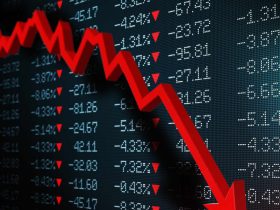Bond yields have had their fun. Now it’s time for earnings to drive the market.
It was a chaotic week for stocks, one that saw them verging on a meltdown as bond yields shot higher. Instead, the
Dow Jones Industrial Average
dropped just 0.3%, while the
S&P 500 index
rose 0.5% and the
Nasdaq Composite
gained 1.6%. Even the
Cboe Volatility index,
or VIX, finished the week relatively flat at 17.3, after trading at 20.88 on Wednesday, its highest level since May.
Driving the volatility was the 10-year Treasury yield, which surged as high as 4.89% this past week, up from a March low of 3.23%. Gone are the fears of recession, replaced with worries that the economy remains too hot and the Federal Reserve, which in September said it wants to keep interest rates higher for longer, will have to do more to ensure that inflation gets back to its 2% target. Those worries hit a crescendo on Friday with the superstrong jobs report, and the stock market seems prepared to move on from bond yields as their primary driver.
And it has been the primary driver. Despite the S&P 500’s 7% decline from its July peak, the “equity risk premium”—the index’s earnings yield minus the yield on the 10-year Treasury—sits at 0.8 percentage point, right about where it was before the selloff. That’s a sign that the recent selloff was little more than the market’s response to the suddenly higher yield that investors can get from Treasuries, rather than more fundamental issues like, say, earnings power.
Earnings season, as it happens, is just getting started, with
PepsiCo
(ticker: PEP)—more on that later—reporting on Tuesday, followed by
Delta Air Lines
(DAL) and Walgreens Boots Alliance (
WBA
) on Thursday, and
JPMorgan Chase
(JPM),
Citigroup
(C), and
Wells Fargo
(WFC) on Friday. Third-quarter profits are expected to rise by 0.05%, and the hope is that companies will beat, as they did during the first and second quarters, and push expectations even higher.
Unfortunately, earnings estimates have risen heading into this season, setting the market up for possible disappointment—and a resumption of its decline. “A robust third-quarter earnings season may be needed to support a year-end rally,” writes Ed Clissold, chief U.S. strategist at Ned Davis Research.
That robustness may not emerge. The economy tends to get a delayed hit when rates rise, and once it falters, profits may disappoint, says Victor Cossel, macro strategist at Seaport Research Partners.
And if analysts are forced to cut estimates? The resulting market downside should depend on how deep the cuts are, but also on whether the market can hold its key support levels. If the S&P 500 can’t stay above 4200—which it did this past week—the next leg down would take it to about 4100. But if the drops are rapid enough, the momentum could send the index down to about 3900, says Katie Stockton, managing partner at Fairlead Strategies, for about 8% of downside.
A disappointing third-quarter earnings season could drive that downside. Let’s hope it isn’t too disappointing.
Write to Jacob Sonenshine at [email protected]
Read the full article here











Leave a Reply